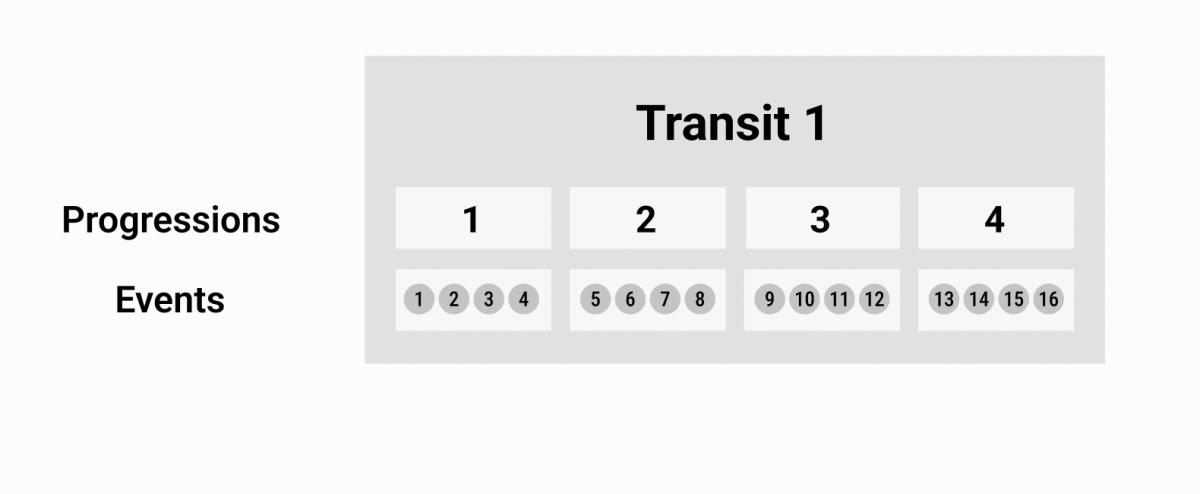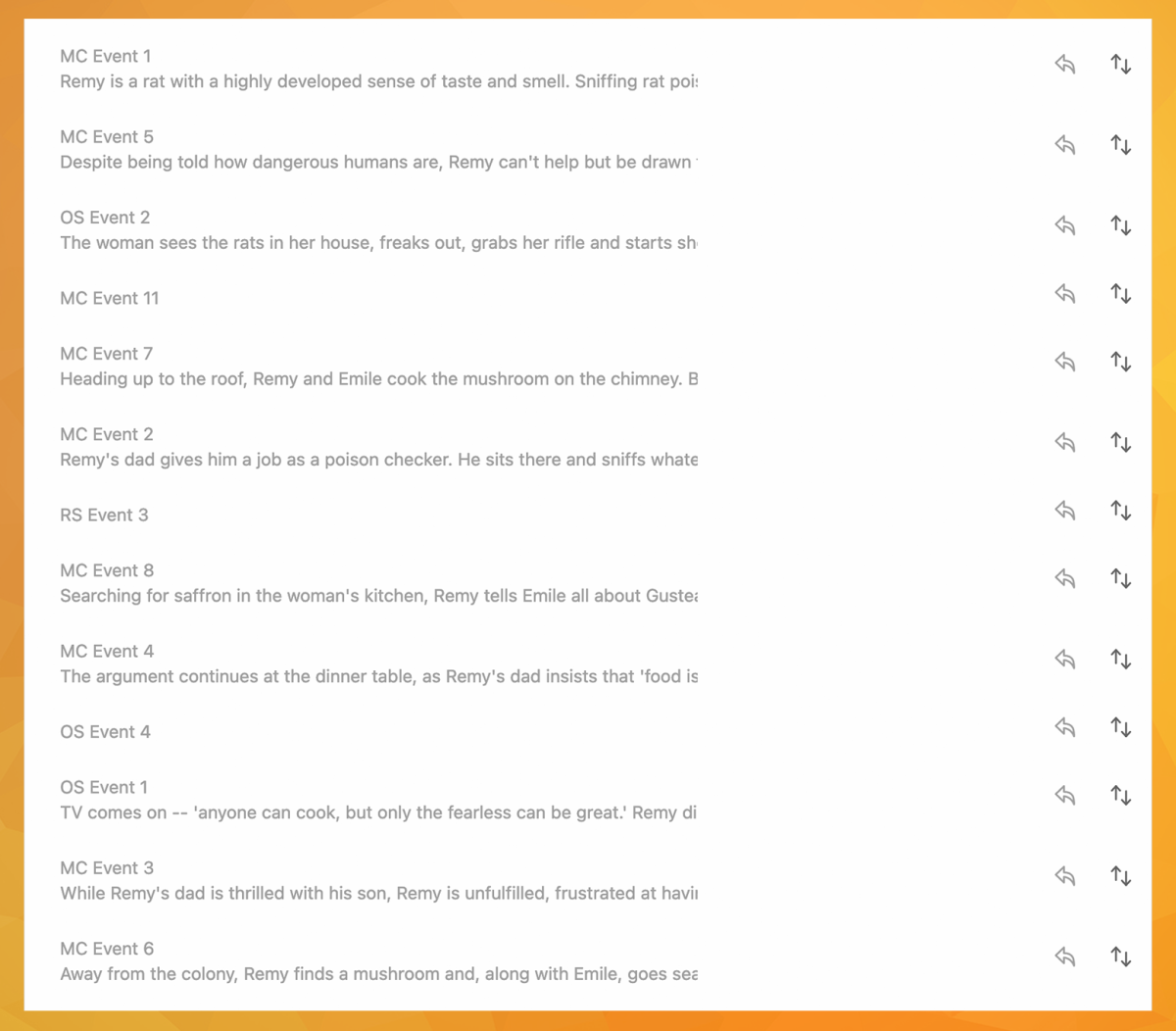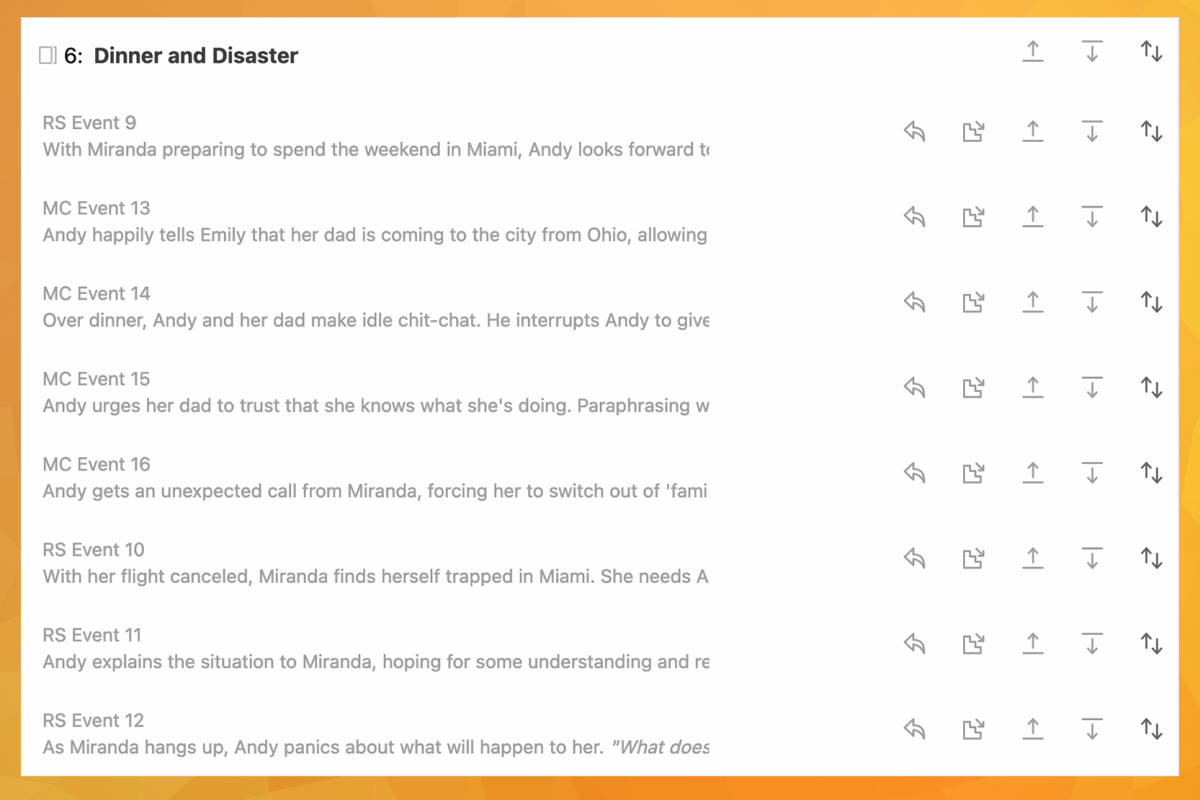Making an Event-ful Story
Mastering the art of illustrating the key Events in your story
Subtxt is a gamechanger for writers. What once required a 600-page book and 10+ years of study can now be achieved in weeks with the app alone. But some parts of Subtxt can feel overwhelming if you’re not sure how to use them.
Transits are easy to understand. They’re the building blocks of your story, a broad illustration of the conflict in each act. Progressions work in more or less the same way, but on a deeper level. Typically, a writer will build transits and progressions individually, focusing on one throughline at a time before weaving them all together later. But events are much more complicated.
When done right, events are tiny strands of story DNA. They’re so tightly woven together, ping-ponging off one another to create each scene or moment, that trying to separate and identify them for the Devil Wears Prada analysis was a nightmare.
That makes for great, tight and meaningful storytelling, but how could you ever hope to achieve the same thing? Turns out: it’s fairly easy. IF you know how to do it. If you develop the events focusing only on one throughline at a time, you’re be setting yourself up for a nightmare. By the time you get to weaving, you’re be looking at 256 events and a brief, but memorable, breakdown. Approaching events this way is like cooking spaghetti and then trying to build a statue out of it. You can do it... but at what cost??
Some people will probably LOVE the challenge of assembling their spaghetti story! But if you’re looking for the ‘cleanest’ and least chaotic way to do it, the answer is simple: leave the Events until you can’t avoid them.
Once you’ve developed your story down to the Progression level, you’ll probably have a strong idea of how the whole thing will play out. This is the time to break into Events, if you want to go that far. The process is the easiest possible writing exercise: you just piece it together.
Using the Progressions and your imagination, you can look to the Events and start piecing together which beat will best serve this moment or scene. Envision your scenes, write the Events, arrange accordingly, rewrite or rearrange, blend them together to flow in a way that works, and before you know it…you’ve built a moment.
There’s an unexpected bonus that comes from working in this way: you reverse-engineer your Progressions. When you go back and look at a Progression, you’ll notice that those four Events, which worked so well when weaved, work on their own. You’ve built a dramatic unit that stands alone, but also plays a role in a much bigger ‘moment.’
That’s the art of storytelling, and it’s what makes Subtxt such a unique and incredible tool. But let’s take a look at an example to show what I mean.
This is the first half of the ‘Announcement’ scene from the final act of The Devil Wears Prada (spoiler warning!). This moment is made up of three Progressions: one from the Objective Story Throughline (in red), one from the Relationship Story Throughline (in yellow…ish), and half from the Main Character Throughline (in blue).
Read through the whole outlined scene once and then take another look, but focusing on only the red or yellow paragraphs.
Crazy, right?
While that third Relationship Story Throughline beat is a little awkward if you ONLY read the yellow paragraphs, that’s purely to make it flow better as a whole. Specifying what’s happening ‘outside the venue hall’ in two successive paragraphs is just bad writing. But the point is that those individual beats function on their own, as well as part of a larger ‘moment.’
Now try and imagine writing a three-Throughline scene like this but ONLY focusing on one Throughline at a time before connecting them all. What did I tell you? Like building a statue with spaghetti. It’ll take you four times as long as it would to build the moment all at once and refine it later.
If you can master the art of crafting Events within Subtxt, you’ll reach a whole new level of meaningful storytelling.
Your outline will be more detailed, nuanced and well-crafted than ever before, allowing you to infuse each beat, each moment with meaning.
And, best of all, your masterpiece will not resemble a giant messy pool of spaghetti.
Unless, of course, that’s what you’re going for.
Download the FREE e-book Never Trust a Hero
Don't miss out on the latest in narrative theory and storytelling with artificial intelligence. Subscribe to the Narrative First newsletter below and receive a link to download the 20-page e-book, Never Trust a Hero.




